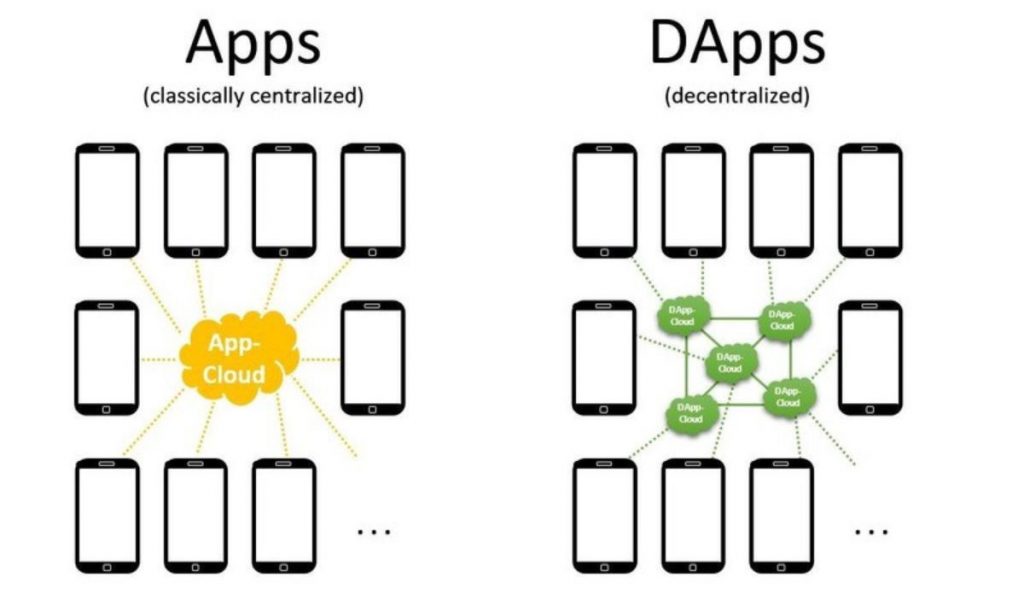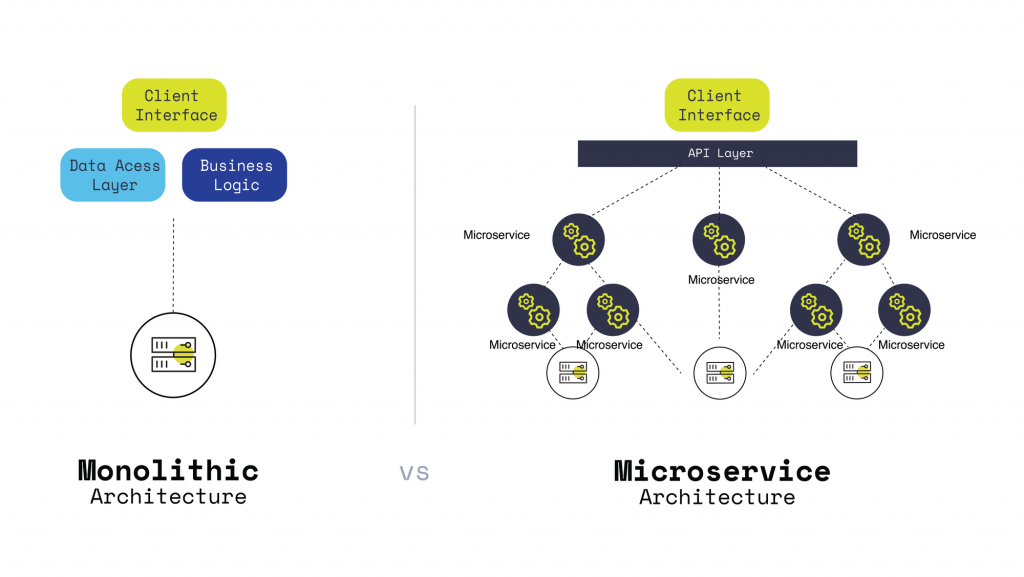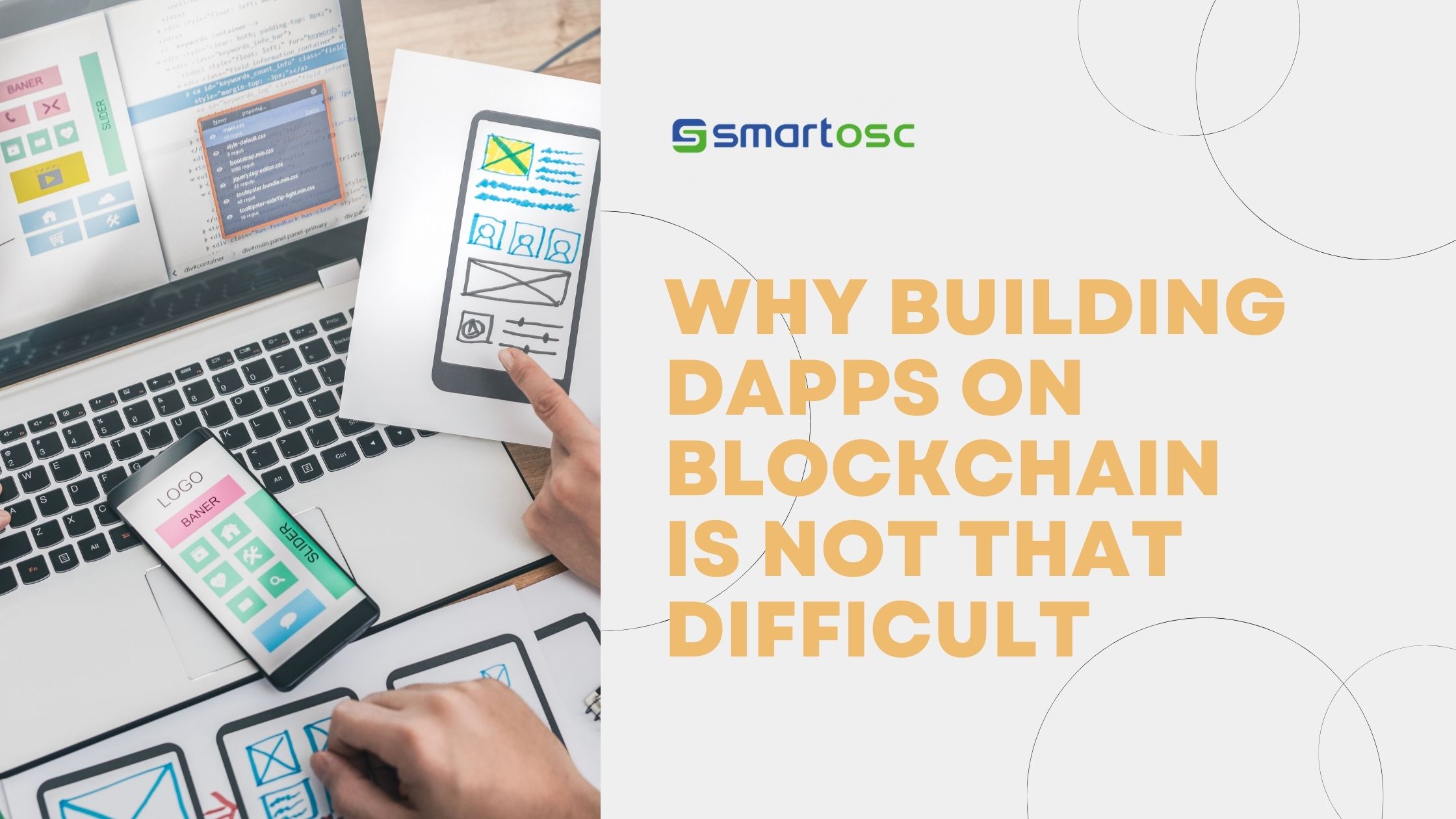dApp, in other words, is a decentralized application, and many of us are not very familiar with this, let alone using one. Thanks to Bitcoin and other crypto platforms, building dApps on blockchain has recently become a hot topic and it seems rather tricky due to the complicated concepts. Today’s article aims to educate you with knowledge about this advantageous, though not-entirely-brand-new, technology.
Difference between dApp and App
The exciting thing about dApps vs. Apps is that they often look the same to users on the surface. The only difference is that dApps always include some crypto token and tokenomics built-in (economic model). But there are still centralized apps working with cryptocurrency. These centralized apps (traditional apps) that we use daily, whether to surf news or check today’s weather forecast, require the most common thing: servers to sync data.
Decentralized apps, dApps, on the other hand, are built on a peer-to-peer network called blockchain, with no involvement of central servers. The consensus of blockchain participants permits the functionality of these decentralized apps.

dApps Architecture
Building dApps on blockchain can only be easy if you understand the architecture of dApps. Don’t worry. We are not going too technical here.
dApp lives on blockchains, as we already know. To be more specific, the precise part that lives on blockchain is a smart contract. This software executes automatic tasks such as transferring NFTs, paying out users’ bonuses, or performing on-chain actions in apps. Users can interact with smart contracts on any familiar user interface such as web, desktop, mobile, etc. But they need to connect to a crypto wallet to work with a dApp. Take any familiar platform, and combine it with smart contracts; you have a dApp.
dApps does not have to rely on a single, smart contract. It is not uncommon for complex decentralized solutions to perform on many interconnected smart contracts that run actions on other contracts.

Create a Decentralized Application in 5 steps
As described above, when building dApps on blockchain, you need to work on smart contract, and front ends. A competent team of developers could save you some time to sort out all these technical intricacies. In SmartOSC, we have recently introduced Full-service blockchain solution to provide end-to-end and innovation-driven services. Thus helping product companies or non-IT enterprises meet their organizational goals.
Step 1: Build a Smart Contract
Since smart contracts work on blockchain, one or a few blockchains could be essential if you envision a cross-chain dApp. Commonly, founders often choose to build dApps on Ethereum, but other blockchains are too. Ethereum is a great choice for users who already own crypto wallets. Generally, it does not matter what blockchain to onboard your customers on if you would like to segment disparate audiences unfamiliar with blockchain technology.
Step 2: Build Front end
The main objective of this step is to minimize the visual effect of smart contracts function on blockchain interface so the customer can have a seamless experience using the dApps. It is great if you start with adjusting UI/UX with the prototype:
- low-fidelity UI
- high-fidelity UI
- user testing
- Optimize UI/UX based on the feedback
Step 3: Create a Centralized Back end
If you are building dApps on blockchain that require a huge amount of storage or envision any functionality out of scope, a web solution is needed on a private server. This admin portal will grant the customers rights to provide additional features as business owners (control apps) and users.
Step 4: Testing
Same as with any other development project, dApps should be tested through a QA process as soon as possible during the development phase.
Step 5: Deploy and Maintain
The deployment process involves uploading dApps on App listing channel, switching the back-end portal to a live production environment, and including a smart contract to the blockchain.
Even though the smart contract is immune to change, you will need to optimize the front ends for the maintenance process regularly.
How SmartOSC service can help in building Decentralized Application
At SmartOSC, we are popular with years of experience in providing solutions that maximize conversions, excellent customer experience, and optimized costs. Currently, we are focusing on fintech and developing full-service blockchain solutions. We hope you can now grasp the general idea of building dApps on blockchain. If you want to know more about our process of building dApps on blockchain, feel free to schedule a meeting.
Contact us if you have any queries about Blockchain development services, dApps development, NFT marketplace development, Crypto wallet development, Smart contracts development.

